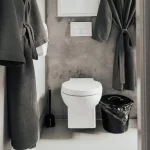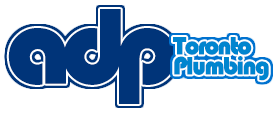Every year, Toronto homeowners are plagued by wet basement problems. It’s a fact of property ownership in the GTA that sooner or later, you’re going to have to waterproof your basement and foundations or you risk being flooded. At best, you’ll have damp and mildew hanging around that can damage your personal possessions, create nasty spores your family inhales and ruin any furnishings you keep downstairs. There are some reasonable solutions to wet basements, however, ranging from timely drain repairs through professional damp proofing.
We’ve put together this list for you:
Ensure Flow Routes
One of the main reasons for basement flooding is a lack of suitable overland flow routes for water during heavy storms. You can resolve this by:
- Having your downspouts disconnected from the eavestroughs, if they aren’t already done. Make sure they drain away at least 6 feet from your basement walls.
- Clearing debris from eavestroughs and other catchment areas on a regular basis to enable the water to drain away properly.
- Creating “soft-surface” landscaping such as larger areas of sodding and paving using porous materials. This allows storm waters to soak away into your garden instead of running into the local sewer system.
You can also plant trees and native vegetation to attract storm waters to their roots, instead of draining away.
Maintain Your System
Check for cracks and leaks in your basement walls and floors, around window wells and in the foundations. Fix any problems you find as soon as possible, to avoid them becoming worse—usually just in time for the heavy rains.
Have your drainage system inspected regularly and carry out any drain repairs or cleaning that is needed to maintain its efficient operation. If you live in an area such as Scarborough that is high-risk for basement flooding, consider entering into a maintenance agreement with your local plumber to ensure you aren’t caught off-guard.
Check Your Compliance
Verify that your residential plumbing is compliant with the City of Toronto’s requirements. These may include installation of flood-prevention devices such as:
- Backwater valve
- Sump pump
- Floor drains or caps
- Backup alarms
Check your installed devices regularly to make sure they are in good working condition, and if you’re missing any of the components of a sound flood prevention system, get estimates for installing it. Remember, the City’s Basement Flooding Protection Subsidy Program offers financial assistance for homeowners to ensure they are protected.
Get Covered
Finally, check with your insurance provider to find out what you are covered for in the event of a flood. Typically, your premiums will be lower if you have all the other bases covered. You need to ensure that if you have a flood in spite of taking precautions, however, the insurance will pay out your claim for any losses you experience. Whether you need basic drain repairs or complete restoration of your basement and foundations, it’s essential to know what your homeowner’s insurance policy provides for before it happens.






